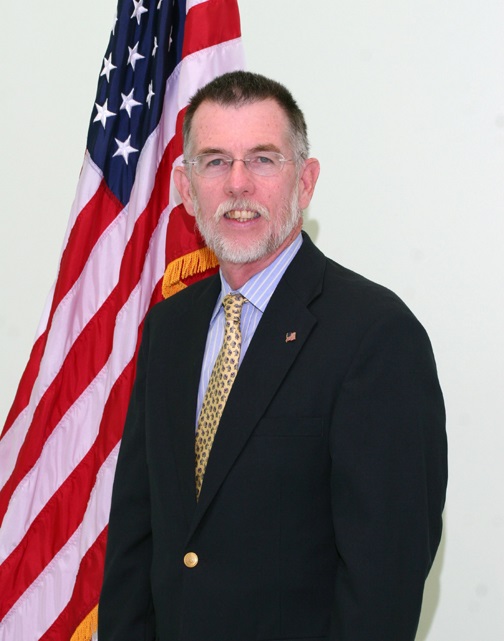By Katie Bisaro
In accordance with Governor Andrew Cuomo’s Executive Order 203 (EO 203) New York State Police Reform and Reinvention Collaborative, a community panel has been established in the Town of Warwick to review protocols and procedures of the Warwick Police Department (WPD) as well as its relationship with the local community. EO 203 came about in light of recent police-involved deaths and subsequent protests that have taken place in New York State and across the nation.
Gov. Cuomo’s Executive Order directs “each local government entity which has a police agency operating with police officers as defined under 1.20 of the criminal procedure law must perform a comprehensive review of current police force deployments, strategies, policies, procedures, and practices, and develop a plan to improve such deployments, strategies, policies, procedures, and practices, for the purposes of addressing the particular needs of the communities served by such police agency and promote community engagement to foster trust, fairness, and legitimacy, and to address any racial bias and disproportionate policing of communities of color.”
The chief executives of the local governments in the state, namely Supervisor Michael Sweeton in the Town of Warwick, have been tasked with convening the head of the local police agency (WPD Chief Thomas McGovern) and community stakeholders to develop a plan with regards to policing strategies including such issues as use of force policies; procedural justice; racial bias; bias awareness training; de-escalation training and practices; community-based outreach and conflict resolution. The full text of EO 203 can be found at: https://www.governor.ny.gov/news/no-203-new-york-state-police-reform-and-reinvention-collaborative.
Community Panel
The community panel in Warwick consists of Supervisor Sweeton, Chief McGovern, WPD Lt. John Rader, Senior District Attorney Stuart Rosenwasser, Village of Warwick Mayor Michael Newhard, Village of Warwick Trustee George McManus who also serves as Village liaison to WPD, and 10 citizen stakeholders from the Town of Warwick.
The citizen stakeholders include, in alphabetical order, Kathy Brieger of Sun River Health and the Warwick Area Migrant Committee; Pastor Brandon Collins of Grace Community Church; Dr. David Leach, Superintendent of Schools, Warwick Valley Central School District; Ronald Martinez, local citizen who has organized several protests regarding nationwide police-involved shootings; Angel Maysonet, former NYPD; James Mezzetti, President, Warwick Valley Chamber of Commerce; Shawnee Moore, former NYPD, Internal Affairs Bureau; Lew Perry, former NYPD; Rev. Ann Marie Bentsi-Addison Posey, Pastor, UAME Church; and, George Schick, Commissioner, Warwick Fire Department.
“This panel represents a cross section of our community that can help us evaluate how we police here in Warwick and to give our residents confidence that our policies and procedures ensure we do police without bias, with justice and fairness, that we treat every citizen with respect and as human beings,” Sweeton stated.
The first meeting of the community panel took place on Mon., Oct. 26 at the Dorothy C. Wilson Education Center Community Room, located in the school district administrative offices. It was broadcast live on the Town of Warwick Facebook page and is available to view on the Town website, www.townofwarwick.org.
Prior to the Oct. 26 meeting, the municipal officials and panel members held an informal “meet and greet” to introduce themselves and discuss the topics to be covered for the first meeting. The agenda was set from that discussion and included presentations by the Warwick Police Department on their current operations, manpower, training and community involvement.
Warwick PD Manpower
Warwick Police Chief Thomas McGovern, who started with the Village of Warwick Police Department in 1979 before it merged with the Town PD in 1992, has been with the department for 42 years. He gave a presentation to the panel on his current personnel, patrol areas, overtime needs, and hiring procedures.
The WPD currently employs one chief, two lieutenants (one lieutenant position is vacant at this time); five patrol sergeants (one position is vacant); 15 full-time officers (four additional vacancies); and six part-time officers (also four vacancies). There are also six school resource officers (SRO), four full-time and two part-time, that serve all three school districts in the Town of Warwick. Overall, McGovern reported, there are 42 police officers (plus eight vacant positions) which include three women, one Black male and two half-Hispanic males. On the civilian side there are 18 civilian positions, with two part-time vacancies, that currently include seven women and one Hispanic male.
To patrol the 104 square miles that encompasses the Town of Warwick, police officers work in three shifts around the clock. The Warwick Police Department covers everything outside of the Villages of Florida and Greenwood Lake, which each have their own police departments, from Sterling Forest, over Mt. Peter into the Warwick Valley to Pine Island and the area surrounding the Village of Florida. The majority of WPD calls originate in the Village of Warwick, an area of approximately 2.5 square miles which has coverage 24/7, including dispatch operations, with officers that rotate to that patrol post.
To adequately cover the Town posts, according to McGovern, 84 to 105 shifts are needed per week to allow for vacation time, sick days, comp time, etc. The chief commented that there are times that a choice has to be made between paying overtime to cover a shift or have a particular shift “short” of personnel.
Sweeton reported that in 2019, almost $8.5 million was budgeted for the police department, 91% of that was in salaries and benefits. The total police budget represents around 42% of the total Town budget. The remainder of the budgeted police funds are for such items as vehicles, weapons and fuel. The overtime budget for WPD is $300,000. Entry level pay for a police officer is $76,800 plus benefits, which equates to $120,000.
The Village of Warwick contributes around $2.2 million to the Town for police services – a portion of which is collected from Village residents through their Town taxes and a portion that is “paid” to the Town from the Village.
For hiring purposes, the list of potential police officer candidates is compiled by Orange County through the New York State Department of Civil Service test in conjunction with the Division of Criminal Justice Services (DCJS). Successful candidates from the written exam must complete a physical agility test. A list is created from those two phases – a county-wide list and one for each municipality. The Town requests the list and the top three candidates may be evaluated and recommended to the Town Board to fill vacancies.
McGovern reported that, in the past, the local Warwick list would sometimes run four pages long with candidates’ names. Recently, only 11 names were on the list – all good candidates but there is no academy training until February.
Sgt. Ed Mullins, past president of the Warwick Police Benevolent Association (PBA), spoke about recruitment of potential law enforcement personnel. The department uses social media to provide information and talks to those who are interested. Interested candidates can also be invited for a patrol ride-along.
Recruitment Among Minorities
Ronald Martinez, who has organized local protests in the wake of police-involved shootings, asked what is being done to engage potential Black or Latino candidates for the police force and if there are funds allocated to “market” to those particular communities.
Supervisor Sweeton pointed out that candidates for the police force must come off the list that is distributed by the County in accordance with civil service law, but that there is community outreach, local events and that the police department also has a presence in the schools. He described the WPD as a “community police force” as opposed to an “urban” force and noted that officers are involved in most local events and also live within the Town of Warwick.
“We hope that those interactions encourage minority youth to look at that [community engagement] and think it might be a great thing to do,” Sweeton said.
Kathy Brieger, of the Warwick Migrant Worker Committee, commented that police officers have come to speak to young people of her organization, many of whom are Mexican-American, who were interested in law enforcement. She related a story of a female officer who joined a group of girls for dinner and discussed the many aspects of law enforcement from both points of view – what it’s like to be a police officer and the work they do as well as the girls’ feelings as people of color, how their families view police, how they feel when being pulled over, etc.
“The conversation was raw at times, but it really got at something we’re really trying to work at – how do we understand each other and work against bias. It’s not an easy conversation and it’s not a one-off, it’s really a deeper thing about forming relationships,” Brieger said and added that it [the conversation] was very important and should continue.
Criminal Justice Programs
Dr. David Leach, Superintendent of the Warwick Valley Schools, spoke about the Criminal Justice Program at the High School as a “valuable pathway to graduation” for the students involved, encouraging many to further their education in criminal justice.
“There is no other High School in the region of our size that has a criminal justice program in it and that was really due to the leadership of Lt. Rader and the involvement of the police later on,” Leach stated. “I’m hopeful that more of our students see that [law enforcement] as a viable option and whether it’s a good match for them.”
Police Training Requirements
Lt. John Rader discussed the training requirements of police personnel. He reported that 880 hours of training at the Police Academy are required along with 300 hours of field training. Those seeking to become Sergeants are required to take another 120 hours of class.
Throughout the year, a minimum of 21 hours of training is required of all officers including firearms, tasers, CPR, First Aid, Automated External Defibrillators (AED), Tourniquets, and administration of Naloxone HCl (Narcan) to reverse opioid overdoses. The K-9 units also train 24 to 32 hours per month.
Orange County has a mental health unit that is located at the County 9-1-1 Center. The mental health unit can be reached by dialing 3-1-1 to ensure the proper personnel respond to incidences.
It was pointed out that the Warwick Police responds to all calls – fire, ambulance, overdoses, etc. – they are almost always the first to arrive at every scene.
Community Outreach
The panel discussed “community policing” which is common in more urban areas. This can be a challenge in the Town of Warwick as four or five patrol officers are responsible for covering the entire town, the majority of which is rural.
Panelists suggested ways in which the police could get involved in the community such as through churches, community centers and groups to allow citizens to get to know the police even in a rural community and vice versa.
Lt. Rader highlighted the department’s efforts in community involvement that have built relationships over the years through interaction with the public.
He reported that the Village patrolman, when practical, will walk a foot post and interact with businesses and the public.
Since 2005 the department has conducted ride-alongs with the BOCES Criminal Justice program and most recently with the Warwick H.S. program. The PBA recently had criminal justice vests made up for the Criminal Justice program at the high school for use at events and once normal activity resumes, those will be distributed.
The department has partnered with colleges in several states to provide an internship program where students can earn three college credits in 90 hours of supervised ride-alongs with uniformed officers, time spent with detectives going over case investigations, and observation in the communications room to see how emergency calls are handled.
Child Safety Seat Technicians
Child safety seat technicians conduct at least two seat safety days per year where the condition of a car seat is checked, as well as the appropriateness for the age of the child and its installation in the car. Through a grant each year, the department purchases seats to be distributed to families who cannot afford safety seats. So far, approximately 50 safety seats have been given out and there are 35 available. Bicycle safety “rodeos” are held for older children as well as tours of the police station for scout groups earning merit badges.
‘Coffee with a Cop’
In 2015, the WPD began hosting “Coffee with a Cop,” a national program designed to have the police and public interact over coffee. These informal conversations are held three times per year in different locations throughout the Town. Lt. Rader reported that through these events the police have received “praise, criticism, concerns about traffic issues in neighborhoods, and even tips on drug activities.” The program will start up again once COVID-19 restrictions are lifted.
Hope Not Handcuffs Program
The Hope Not Handcuffs program is one that encourages anyone suffering from an addiction to call or come into the police station to seek help getting into a recovery program. Trained volunteer “angels” are contacted and assist in finding an appropriate treatment program.
The department also partners with CVS – there is a drug drop box located at the police station where unneeded prescription medication can be safely discarded, “a major step in preventing access to addicting medications in the household that are no longer needed.”
Gun locks are offered to residents at no cost to allow them to safely store legally-owned weapons in their residences. WPD Detectives participate in meetings throughout the year with senior citizen groups to discuss fraud and other senior-targeted crimes.
WPD representatives sit on several standing committees and boards including the Chamber of Commerce to address business concerns, and provide police planning and presence to events; the Warwick Valley Coalition which coordinates annual pill drops resulting in the collection of several hundred pounds of discarded medications; and the Applefest Committee which is in the planning stages year-round for the safety and security that is required for that one-day event.
Finally, the WPD assists and participates in several events throughout the year such as Apple Eve, various parades, the Lions 5K, and high school homecoming.
Conversations & Outreach to Continue
Chief McGovern pointed out that one way citizens can get more involved in the Hispanic community is by providing translating services for officers when needed to aid with better communication. It was agreed that this would be a positive step and McGovern has met with Pastor Rolfi, the head of the Hispanic ministry at the Warwick Reformed Church, to address concerns about U.S. Immigration and Customs Enforcement (ICE). McGovern commented that WPD does not enforce federal law particularly if there is no warrant for a criminal charge.
“We have a pretty good relationship, I think, with the Hispanic community. Very few problems, very few interactions and certainly miniscule interactions that result in an arrest,” McGovern stated, and added that he feels the department has a good relationship with the Black community as well.
A suggestion was made to participate in more events in Kings Estates, such as barbeques and block parties that both Lt. Rader and Sgt. Mullins have attended in the past. Ronald Martinez suggested setting up a sporting event, such as a local basketball game with members of the department, that might attract more people of color, “allowing the community to get involved in these particular discussions” leading to effective conversations.
Rev. Ann Marie Bentsi-Addison Posey, Pastor of the UAME Church noted that “we have to be intentional about psychological safety” and conversation should be clear in that regard.
“In our efforts to be politically correct, for want of a better analogy, we need to have some difficult conversations that say, actually, ‘who are you and what is it that you need from me in order for us to truly be safe?’ That’s the weeds we need to get into,” Posey stated.
Sweeton agreed and pointed out that this meeting was an initial step in learning how policing is done in the Town of Warwick at this time and to learn how it could be done more effectively and discover which groups that the department may not be reaching.
The informational nature of this first meeting was a source of frustration to some who were watching and commenting on Facebook Live. More meetings will be planned to have further conversations on the issues raised.
Finally, Sweeton pointed out that the Town website is being revised and updates to police policies from DCJS are being published on the WPD page under “Departments” and available to the public. Additionally, a civilian complaint form is available online that can be downloaded and filed for evaluation and action.
Comments, Questions Still Welcome
Public comments and questions for the panel are still being taken and should be submitted to Supervisor Sweeton at msweeton@townofwarwick.org or can be dropped off at Warwick Town Hall, 132 Kings Hwy., Warwick. The comments and questions received will be shared with the rest of the committee prior to the next meeting to be scheduled at a later date.

Warwick Police Chief Thomas McGovern describes the departments patrol posts during a presentation at the first meeting of the Community Panel to discuss the relationship between the police & the community.

Prior to COVID-19 restrictions, the Warwick Police Dept. hosted ‘Coffee with a Cop’ a community outreach program that allowed police officers & residents to meet in an informal setting to discuss any issues in the community.

In addition to providing security & directing motorists through several detours around the Town of Warwick, the Warwick Police Motorcycle Unit participated in the 2019 Orange County Fireman’s Parade in the Village of Warwick.

Signage on the front door of the Warwick Police station reads in Spanish & in English.






